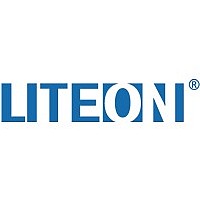ASDL-4360-C22 Lite-On Electronics, ASDL-4360-C22 Datasheet - Page 5

ASDL-4360-C22
Manufacturer Part Number
ASDL-4360-C22
Description
Infrared Emitters Infrared 885nm 120 Degrees
Manufacturer
Lite-On Electronics
Datasheet
1.ASDL-4360-C22.pdf
(6 pages)
Specifications of ASDL-4360-C22
Beam Angle
120 deg
Radiant Intensity
2.8 mW/sr
Maximum Power Dissipation
200 mW
Maximum Operating Temperature
+ 85 C
Minimum Operating Temperature
- 40 C
Fall Time
17 ns
Forward Current
100 mA
Forward Voltage
1.6 V
Mounting Style
SMD/SMT
Rise Time
20 ns
Wavelength
885 nm
Package / Case
PLCC-2
Lead Free Status / RoHS Status
Lead free / RoHS Compliant
Recommended Reflow Profile
The reflow profile is a straight-line representation of a nominal temperature profile for a convective reflow solder
process. The temperature profile is divided into four process zones, each with different DT/Dtime temperature change
rates or duration. The DT/Dtime rates or duration are detailed in the above table. The temperatures are measured at
the component to printed circuit board connections.
In process zone P1, the PC board and component pins are heated to a temperature of 150°C to activate the flux in the
solder paste. The temperature ramp up rate, R1, is limited to 3°C per second to allow for even heating of both the PC
board and component pins.
Process zone P2 should be of sufficient time duration (100 to 180 seconds) to dry the solder paste. The temperature is
raised to a level just below the liquidus point of the solder.
Process zone P3 is the solder reflow zone. In zone P3, the temperature is quickly raised above the liquidus point of
solder to 260°C (500°F) for optimum results. The dwell time above the liquidus point of solder should be between 60
and 90 seconds. This is to assure proper coalescing of the solder paste into liquid solder and the formation of good
solder connections. Beyond the recommended dwell time the intermetallic growth within the solder connections
becomes excessive, resulting in the formation of weak and unreliable connections. The temperature is then rapidly
reduced to a point below the solidus temperature of the solder to allow the solder within the connections to freeze
solid.
Process zone P4 is the cool down after solder freeze. The cool down rate, R5, from the liquidus point of the solder
to 25°C (77°F) should not exceed 6°C per second maximum. This limitation is necessary to allow the PC board and
component pins to change dimensions evenly, putting minimal stresses on the component.
It is recommended to perform reflow soldering no more than twice.
5
150
120
230
217
180
255
200
25
80
Process Zone
Heat Up
Solder Paste Dry
Solder Reflow
Cool Down
Time maintained above liquidus point , 217°C
Peak Temperature
Time within 5°C of actual Peak Temperature
Time 25°C to Peak Temperature
0
R1
HEAT
P1
UP
50
SOLDER PASTE DRY
R2
100
P2
Symbol
P1, R1
P2, R2
P3, R3
P3, R4
P4, R5
150
150°C to 200°C
200°C to 260°C
260°C to 200°C
R3
60 sec to 90 sec
25°C to 150°C
200°C to 25°C
25°C to 260°C
Above 217 C
> 217°C
MAX 260C
200
260°C
REFLOW
SOLDER
DT
-
P3
R4
COOL DOWN
250
Maximum DT/Dtime
P4
R5
or Duration
100s to 180s
60s to 90s
20s to 40s
-6°C/s
-6°C/s
8mins
3°C/s
3°C/s
-
300
t-TIME
(SECONDS)










